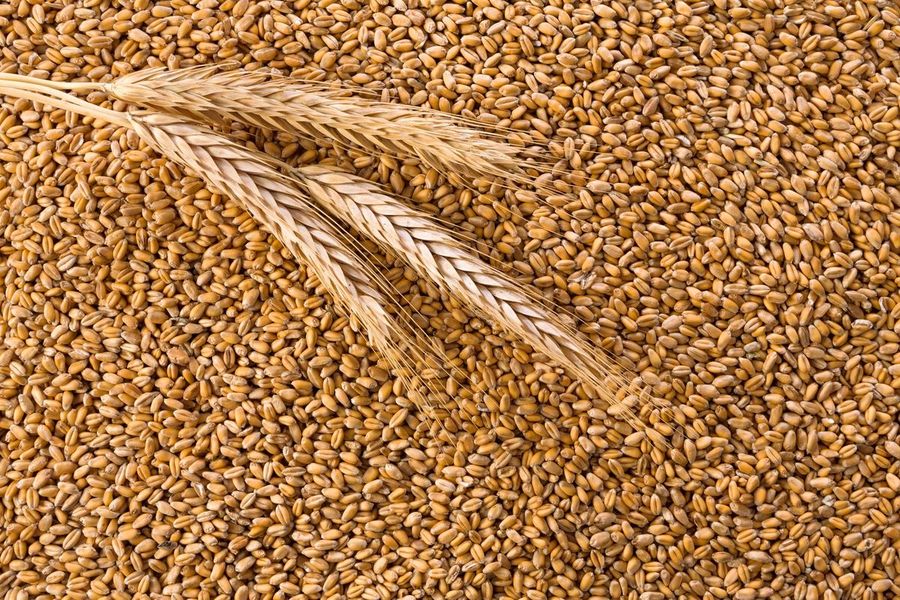Red Sea troubles set south’s firmer tone

Export interest in ASW-type wheat has increased in the past fortnight as Asian consumers and global traders react to uncertainty about getting Black Sea and European wheat through the Red Sea, where Houthi attacks are heavily impacting container movements.
This is offsetting lacklustre spot demand in the domestic feedgrain market which finds itself well covered now that pastures are thriving in most regions and keeping livestock in the paddock.
Grower selling of cereals remains thin as the holiday period draws to a close, with trade longs the main sellers.
On the production front, all eyes are on Tropical Cyclone Kirrily as it heads towards the Queensland coast, with potential to bring ideally timed planting rain to Central Qld sorghum growers.
| Jan 25 | Jan 18 | |
| Barley Downs | $405 | $402 |
| ASW wheat Downs | $398 | $402 |
| Sorghum Downs | $375 | $385 |
| Barley Melbourne | $340 | $340 |
| ASW wheat Melbourne | $360 | $360 |
Table 1: Indicative prices in Australian dollars per tonne.
Lacklustre demand from China on new-crop sorghum has seen values for the red grain slip to the point where it is stimulating widespread interest from the poultry sector.
After a forward price drop in the past week of $10/t, it now sits at around $25/t below wheat, and $30/t below barley, its biggest discount in months to white grain.
“Now we’re seeing domestic interest in sorghum,” Broun & Co director Charles Coventry said.
The Bureau of Meteorology’s eight-day forecast is predicting 10-100mm of rain for NSW and Qld sorghum-growing areas, with CQ tipped to get 25-100mm from the system generated by Tropical Cyclone Kirrily.
On top of recent rain, it means production estimates for the sorghum crop now in the ground in all districts apart from CQ are climbing, further adding to the bearish tone of the sorghum market.
On white grain, domestic sales are ticking away.
“There are less parcels available, but the market seems to be able to find them.”
Mr Coventry said growers were reluctant sellers at current levels, but trade shorts were popping up here and there and drawing out some volume.
“There’s still plenty of wheat being transacted.
“Consumers will stand back while the market keeps falling; the moment it stops falling and turns, some consumers will swing in.”
At the start of harvest, shipping schedules for new-crop wheat out of Brisbane and Newcastle were looking very thin.
Higher-than-expected yields in Victoria in particular have freed up enough NSW wheat to fill more cargoes than initially scheduled in coming weeks, including the first for Qube Grain out of Qube’s Quattro terminal in Port Kembla.
On cottonseed, Woodside Commodities managing director Hamish Steele-Park said market liquidity been very light since Christmas, and new-crop values have slipped.
“Some export demand is evident on new crop as Australian values are now competitive into Asian destination markets with alternate origins,” Mr Steele-Park said.
“Export demand from China is evident, but buying is sporadic at $540-$545/t delivered container terminal.”
Mr Steele-Park said domestic buyers were not covering on new crop now that rain was around, and talk points to reduced numbers of cattle on feed.
“Conditions are favourable in the north, with cotton crop estimates for this current 2023-24 season pushing a little higher due a late but decent dryland plant.
“Recent rain over past months is keeping seed values on the defensive.
“It’s very hard to shift current crop as domestic buyers are still on the sidelines.”
In the Victorian and southern NSW market, grower selling of cereals remains thin.
GeoCommodities broker Brad Knight said on-farm sales are largely coming in response to the recent rain.
“They’re cleaning out field bins and grain bags after all the rain,” Mr Knight said.
Wilken Grain trader Andrew Kelso said export buying interest in Victorian wheat has picked up in the past week or two, with the grip of the Northern Hemisphere mid-winter as well as the Red Sea issue turning Asian interest to Australia.
“Flows of grain from Europe into Asia might be delayed, and certainly the container market has been pretty active for people that want to get grain sooner rather than later.”
Hectic shipping schedules out of Western and South Australian ports in the opening months of the marketing year have kept a chunk of export volume away from Victorian ports, and Port Kembla in NSW.
However, WA and SA volume is expected to slow by March, and Mr Kelso said exporters were starting to post some competitive bids at up-country Vic sites.
“There are some better bids on the board…and others are now seeing value, particularly in wheat.”
Industry estimates put the amount of weather-damaged wheat from the tail end of the Vic harvest at 100,000-200,000t, and Mr Kelso said that will have no trouble finding a home.
“Feedmills through western Vic will soak it up, or someone will put it on a boat and send it overseas.”
Read also
Wheat in Southern Brazil Impacted by Dry Weather and Frosts
Oilseed Industry. Leaders and Strategies in the Times of a Great Change
Black Sea & Danube Region: Oilseed and Vegoil Markets Within Ongoing Transfor...
Serbia. The drought will cause extremely high losses for farmers this year
2023/24 Safrinha Corn in Brazil 91% Harvested
Write to us
Our manager will contact you soon



